Editor’s note: Time for brontodocus’ next contribution. This time, it is the European stag beetle, Lucanus cervus, by CollectA for their Insects line (which is now called Little Wonders, as it contains several non-arthropods such as reptiles and amphibians). Below is a copy of the original walkaround, which was posted shortly after the figure was released back in 2015. Enjoy!
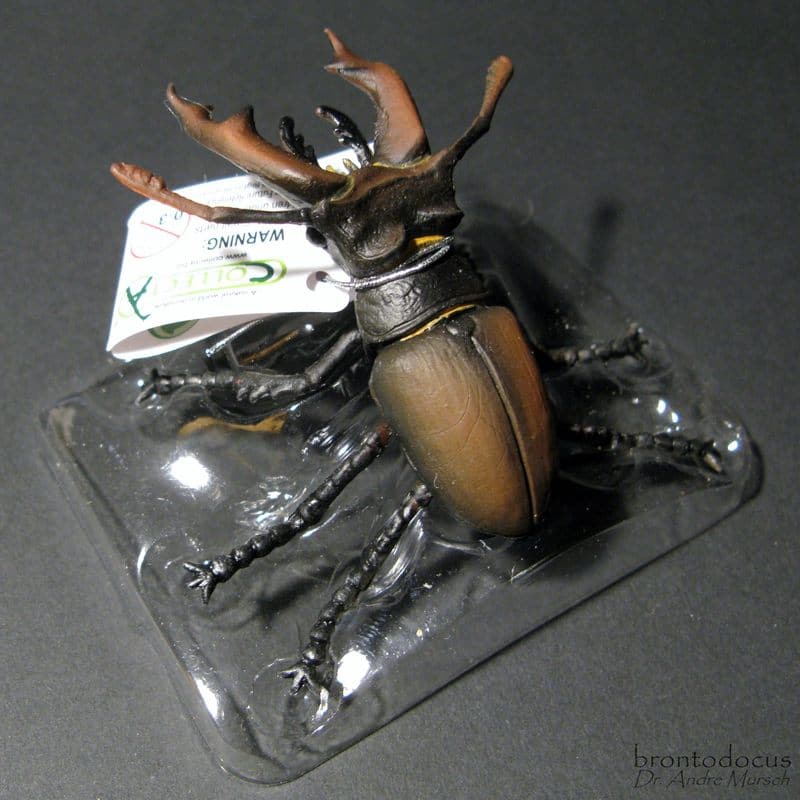
A walk-around of one of the most iconic beetle species in the world – here is the CollectA Insects 88703 Stag Beetle, Lucanus cervus (Linnaeus, 1758); new for 2015. Length including mandibles is 71 mm which makes it about 1:1 scale: Depending on nutrient availability during the larval stage males of the nominate subspecies vary greatly in size between 25 and 75 mm but some major individuals surpass 80 mm (while two subspecies of the eastern Mediterranean, L. c. akbesianus and L. c. judaicus, may even exceed 100 mm).
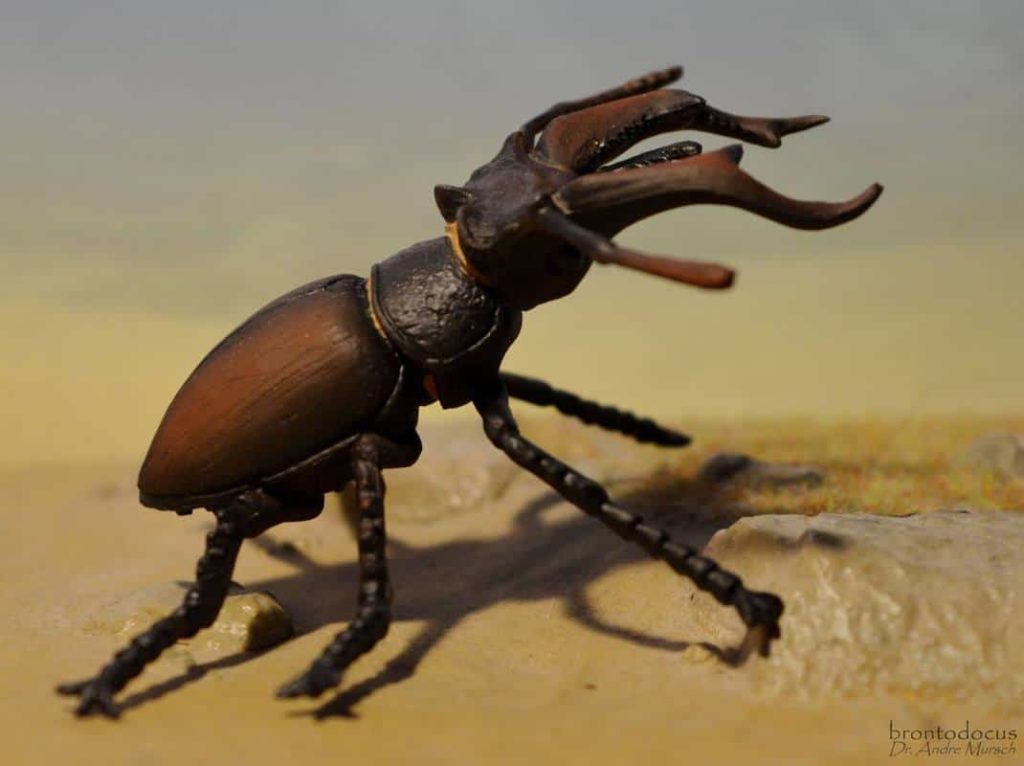
Regardless which subspecies, Lucanus cervus is the largest beetle species in Europe (if you exclude the mandibles there may be a few other species with a larger body, though, e.g. Rhinoceros Beetle Oryctes nasicornis, Giant Ground Beetle Carabus gigas, or the longhorn beetles Cerambyx cerdo and Ergates faber).
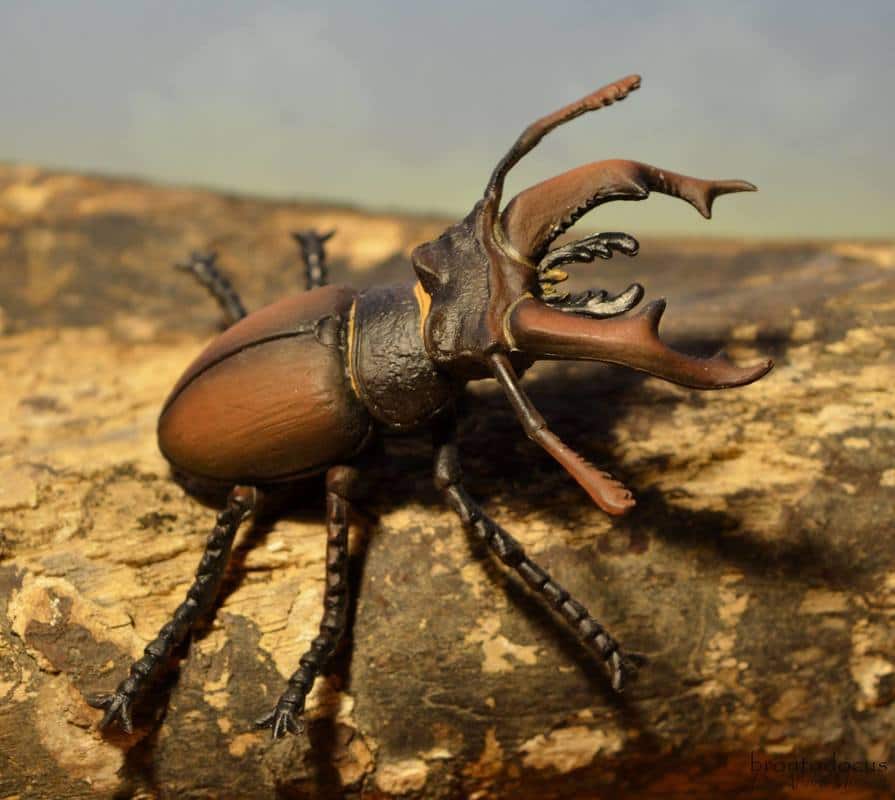
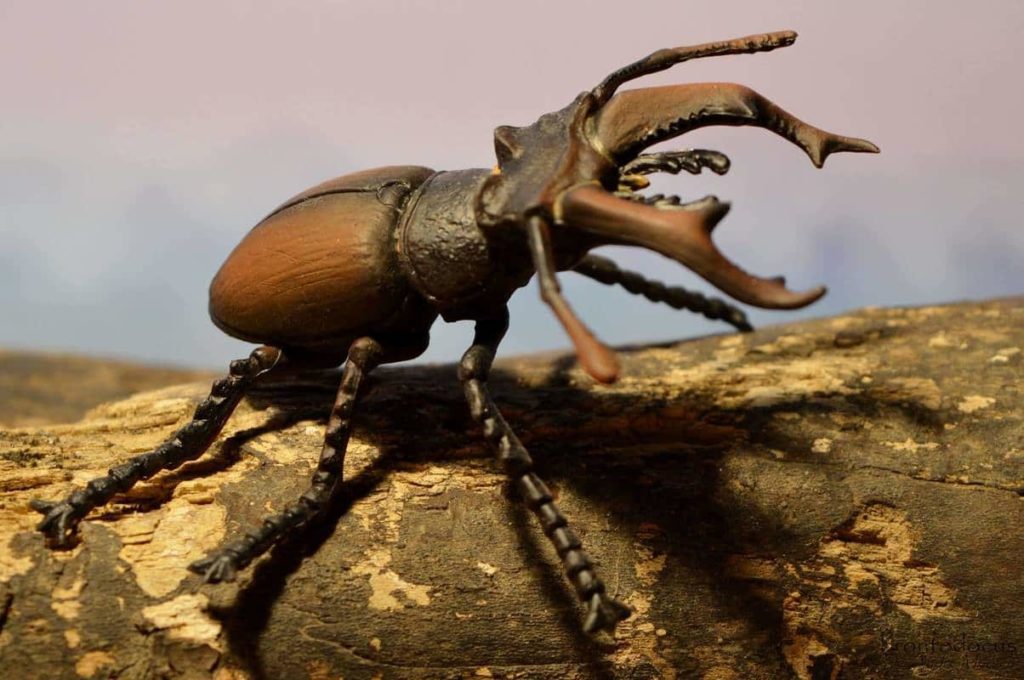
Once a common species in European hardwood forests, this stag beetle has declined in numbers during the 20th Century due to modern forestry, especially the removal of dead oak and beech trees (the larvae can only feed on rotten wood and need incredible amounts to thrive). Where dead trees are not removed the species may return within some years – After the storm “Kyrill” knocked over countless trees in 2007, many forests were not entirely cleared of the dead trees. Probably as a consequence, the Stag Beetle became a lot more common where I live from about 2012 on (the delay may correspond to the long larval stage which takes a few years). The global population of Lucanus cervus has not been evaluated, yet, but it is a protected species throughout most of its range.


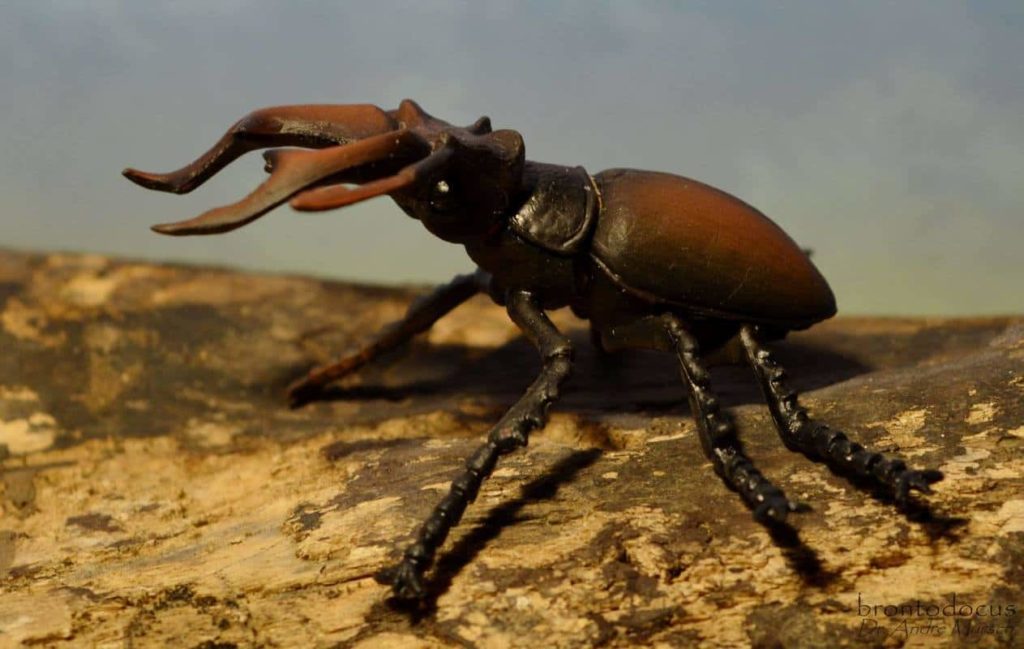
The tarsi of the figure look a little odd because they seem to have three claws instead of two but obviously the middle “claw” is indeed meant to be the empodium. My only other issue with the figure is the abdomen which is a little too deep, actually stag beetles are quite flat-bodied. Other than that, the figure is highly accurate with typical lucanid antennae and five tarsi on each leg. Especially the head is brilliant, even the mouthparts are quite detailed with sculpted maxillary and labial palps.
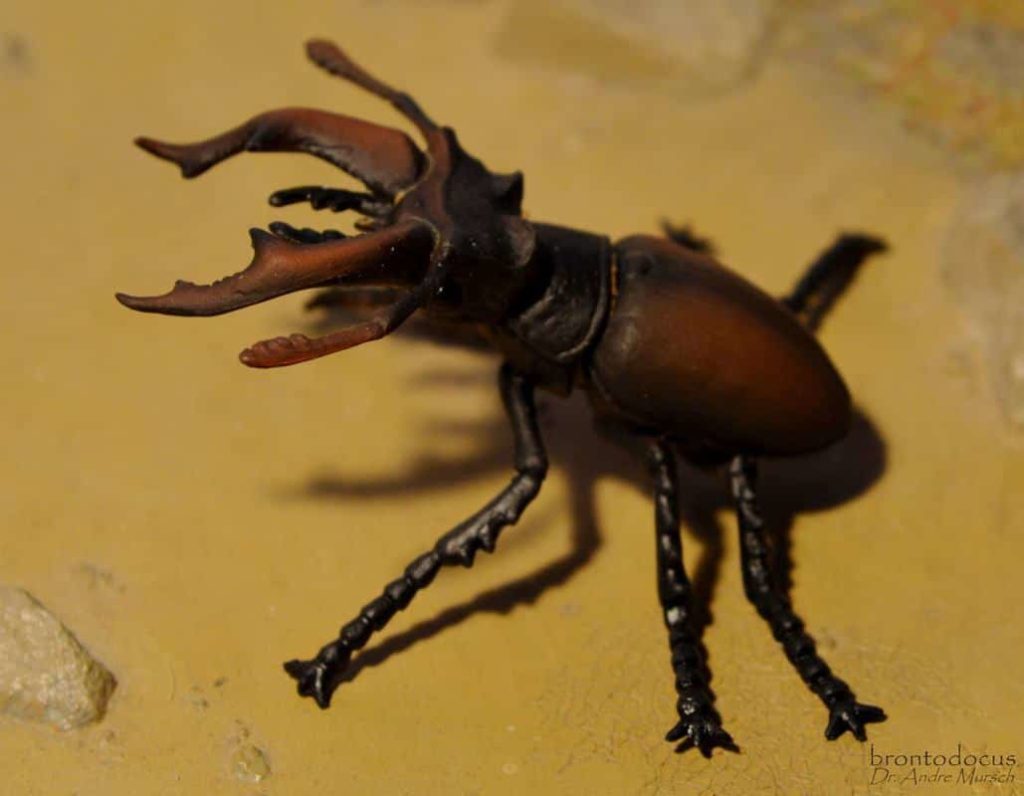



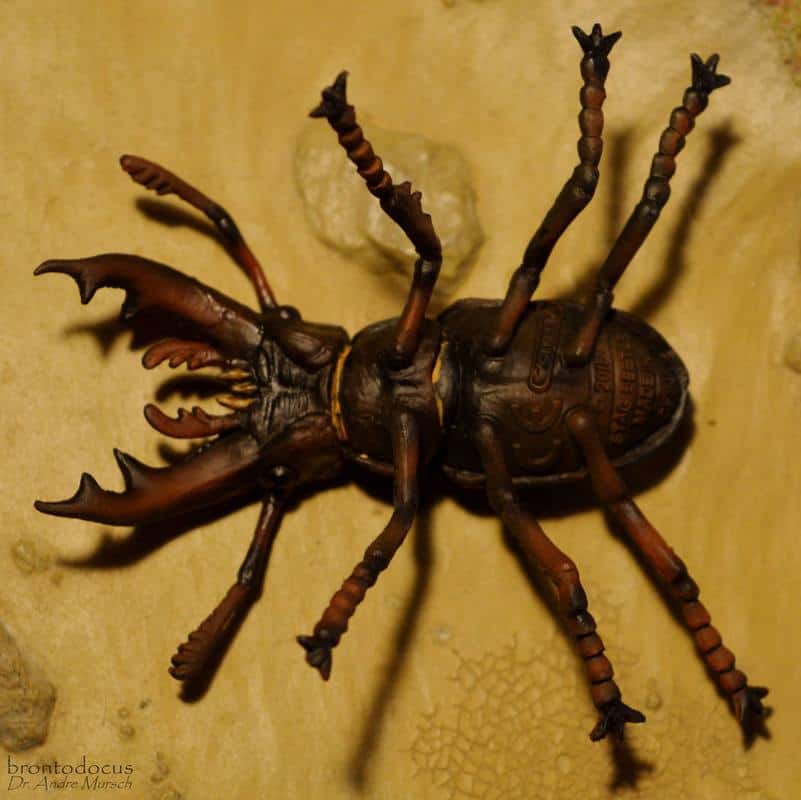
Disclaimer: links to Ebay and Amazon on the AnimalToyBlog are affiliate links, so we make a small commission if you use them. Thanks for supporting us!



